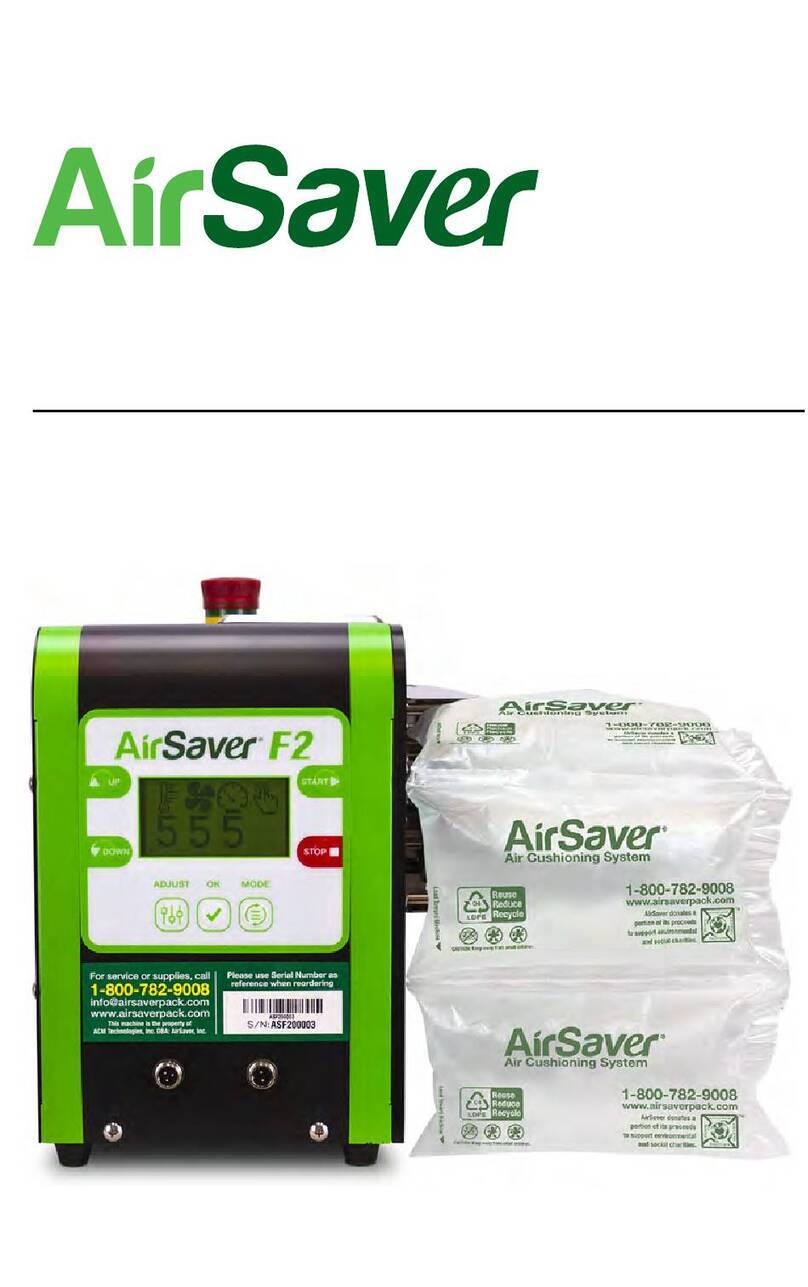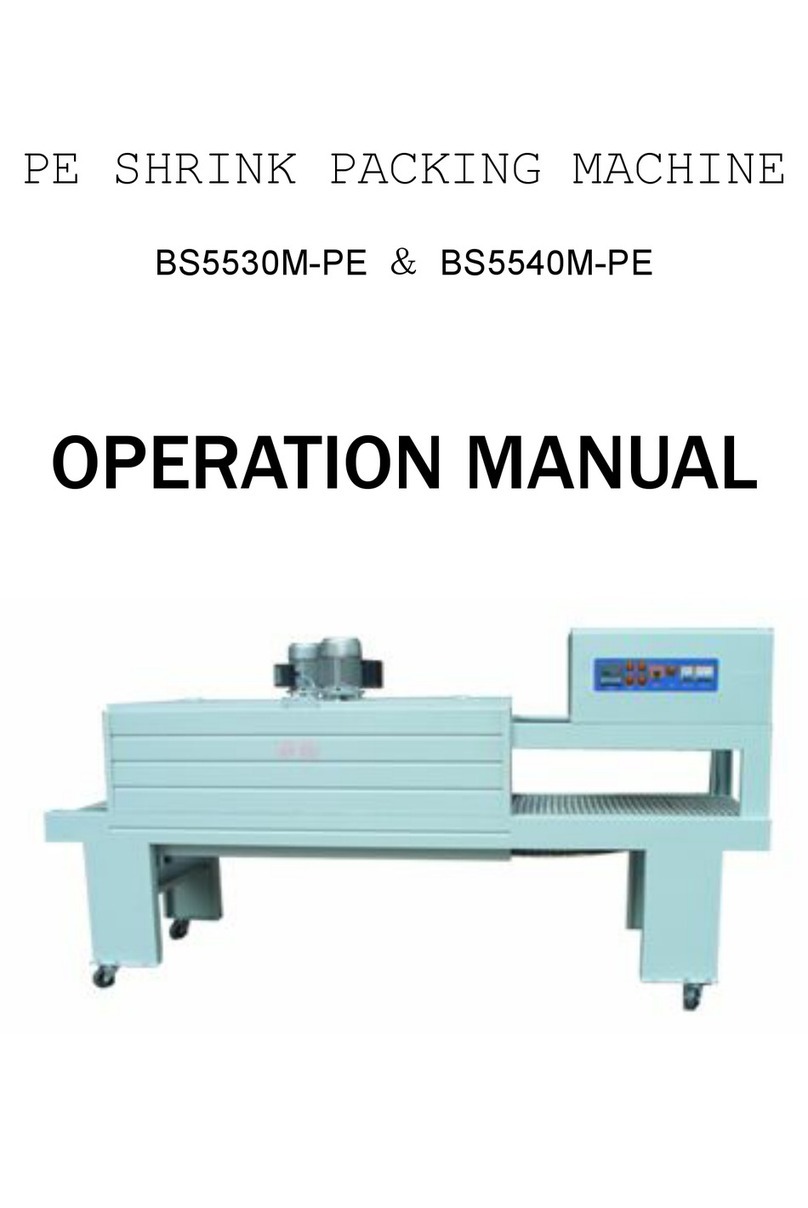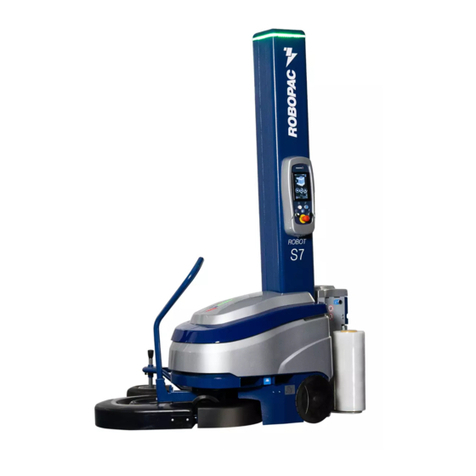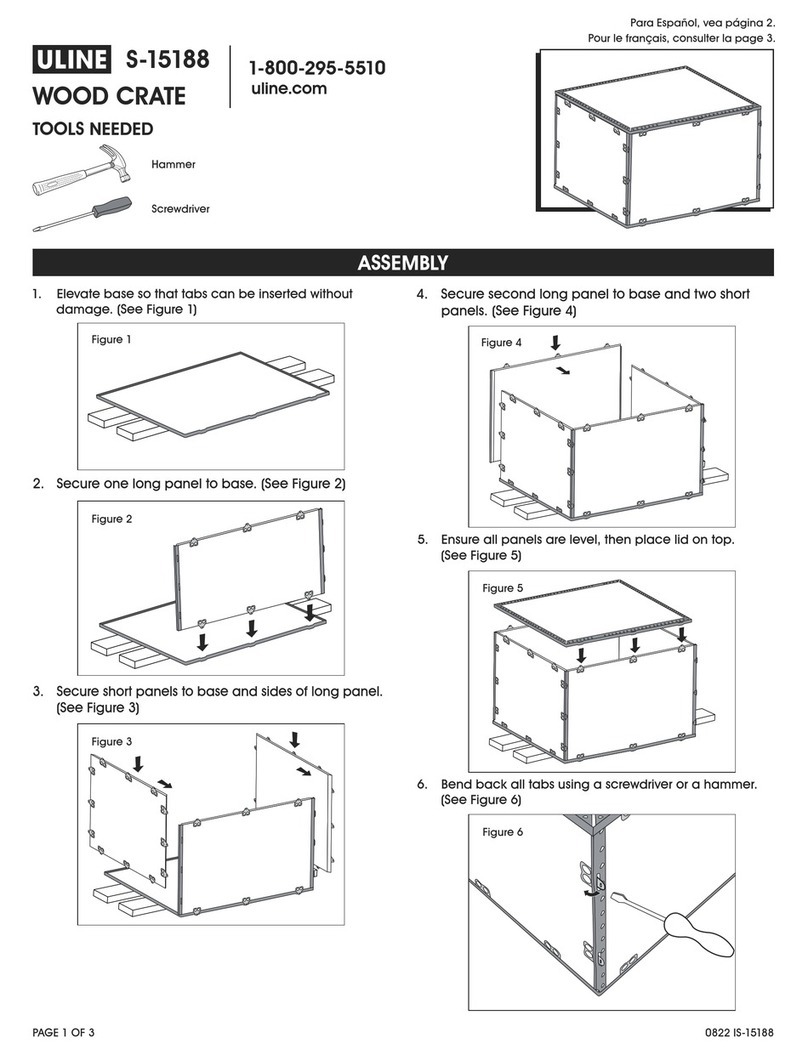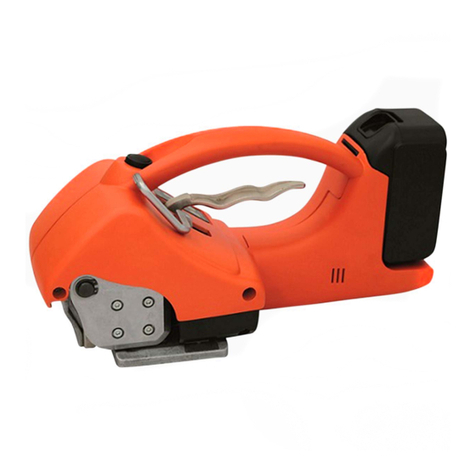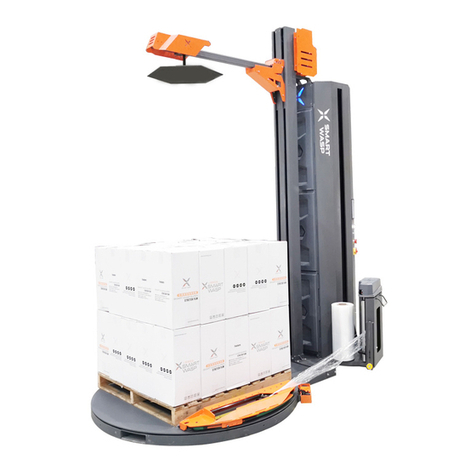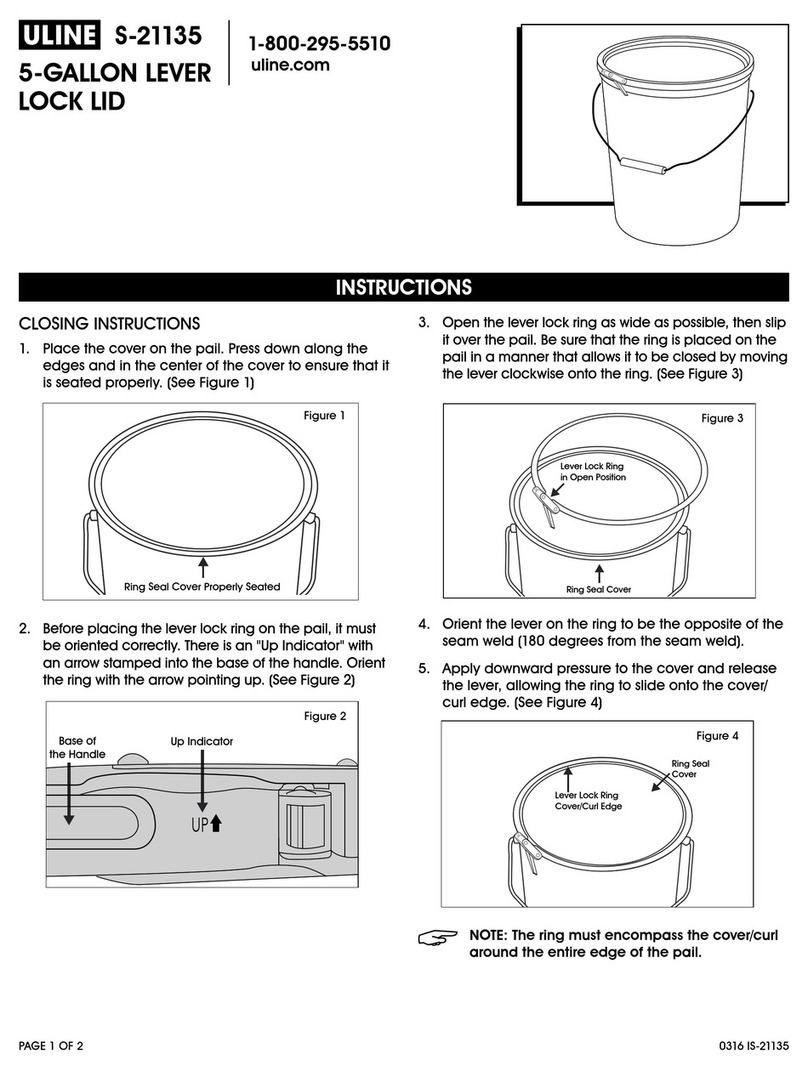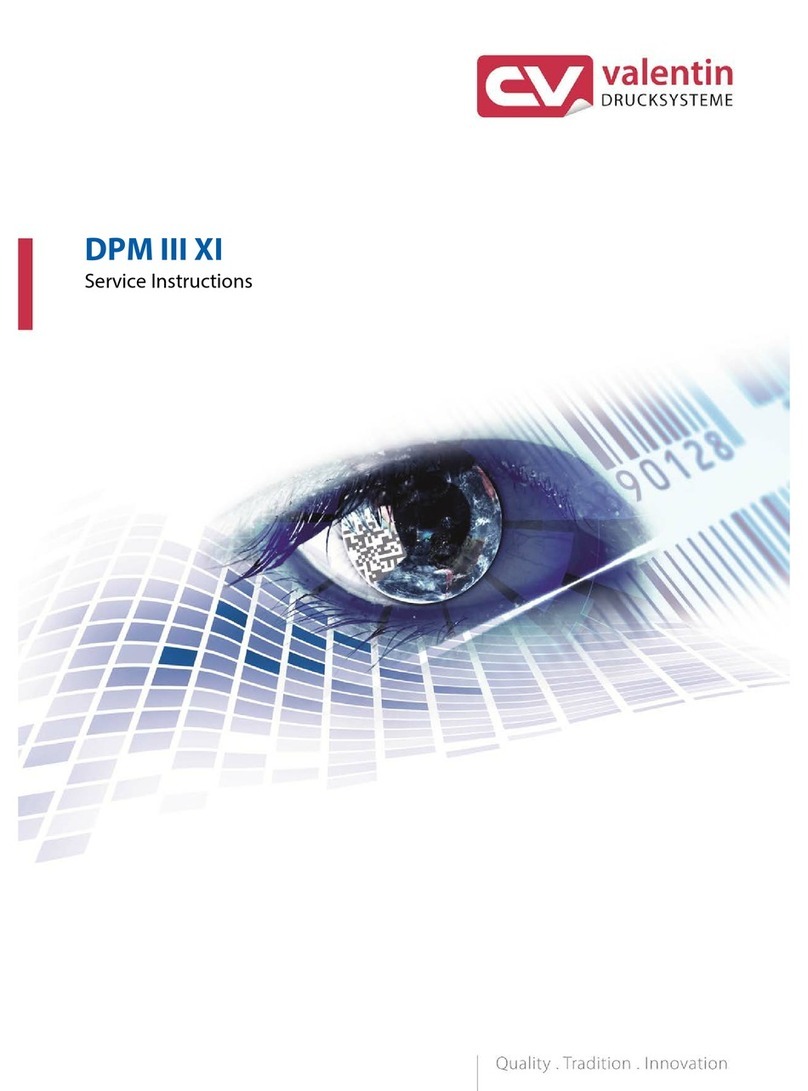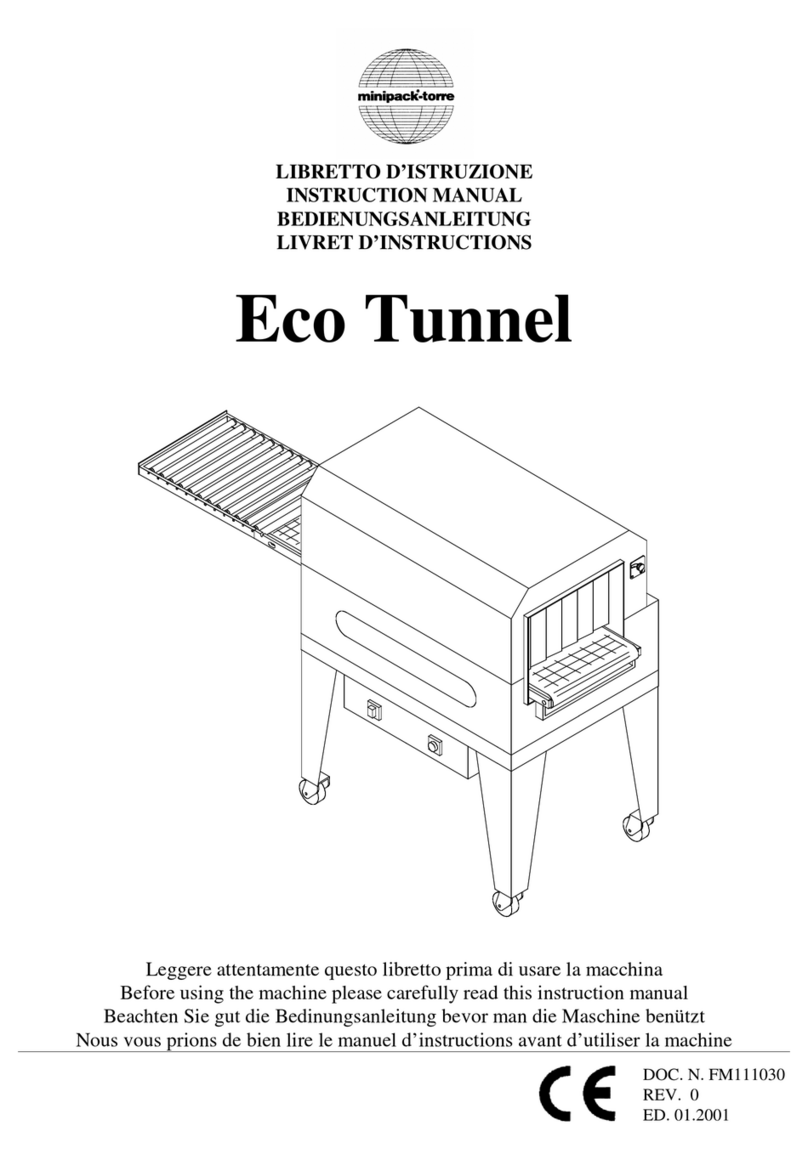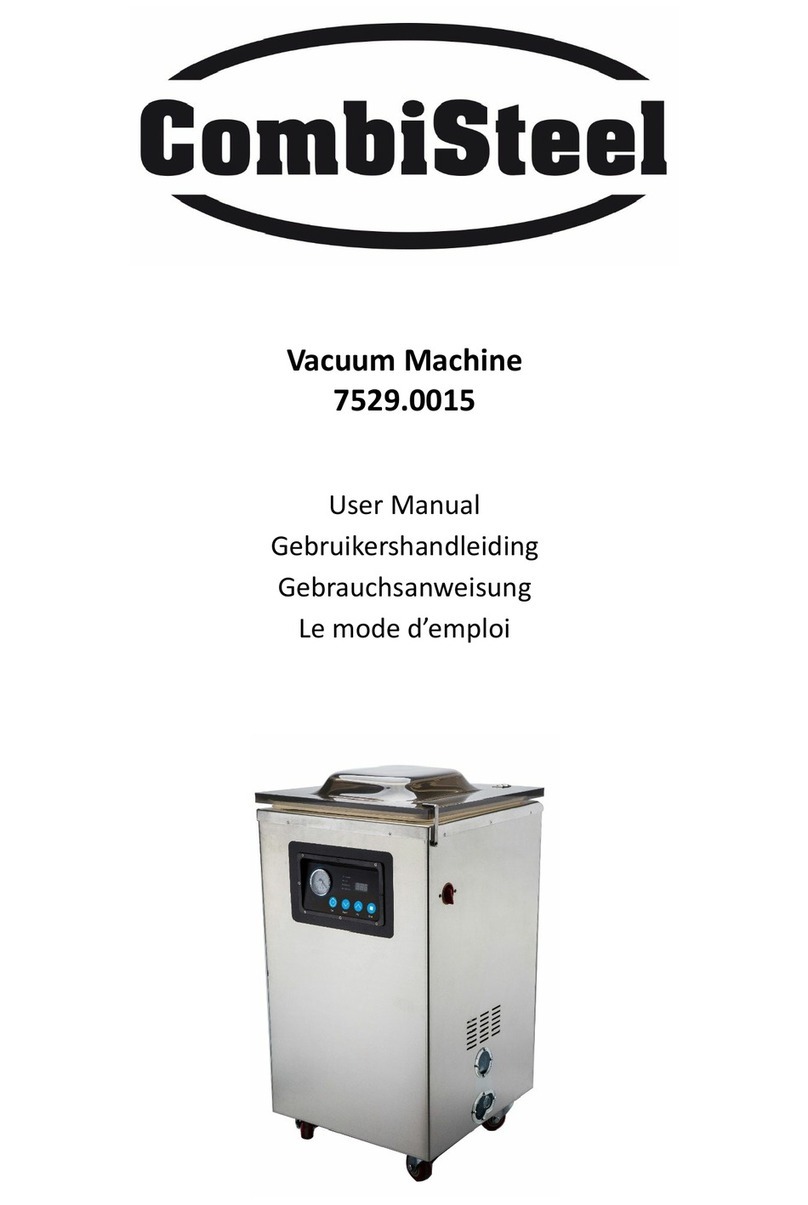
rev. 3 – 26/05/2008 8/10
TROUBLESHOOTING
Following are few of the common troubles that can be solved without calling the maintenance service.
Trouble Cause Action
The main switch is OFF Main switch ON
Plug not in the socket Plug in
Nothing is shown on the
display Cable damaged Check the cable and replace it if necessary
The oil is spoiled Controllare l'olio della pompa ed
eventualmente sostituirlo
The room temperature is lower
than 12°C Place the equipment in a room with a
temperature higher than 12°C
The pump does not work
The electrical connection is
wrong
The equipment must be connected with a
minimum cable section of (see REPLACING
OF THE CONNECTING CABLE)
Defective bag Replace the bag
Bag not inserted correctly Verify fig. 2
No vacuum is being carried
out in the bag Damage weather strip Replace the weather strip (seal)
Should it not be possible to solve the problem after having checked the above suggestions call the
maintenance service.
CLEANING AND MAINTENANCE
ATTENTION : never use direct pressure water jet for cleaning.
Before any maintenance disconnect the machine from the power source.
- Cleaning can be started only when the equipment has cooled down. Cleaning the
equipment is very important. Good cleaning ensures the smooth operation of the
machine and gives a good impression to the customers.
- The stainless steel parts must be cleaned with water and appropriate detergent (do not
use abrasive products). Do not use metal brushes, their use could rust the equipment.
Do never and for no reason use acid containing detergents.
- For cleaning of the Plexiglass lid use a wet chamois-type cloth or similar.
- Before any long stand-by of the machine proceed carefully with the cleaning as
described above.
VACUUM PUMP MAINTENANCE (only for the CVE 420-OLIO model)
Check periodically the oil level indicator of the pump (on the rear of the equipment) : an oil level over the
allowed maximum could cause clogging of the filter.
An oil level too low could cause a poor vacuum level and damage the pump.
Frequently replace the pump oil.
The pumping of pollutant compounds may require more frequent oil changes (even every 2/3 months).
If the oil appears dark, turgid or thick, the oil has lost its lub properties and needs to be changed
immediately.
For oil replacing please follow the scheme here below :
SHELL ESSO BP Oil quantity
TELLUS 32 NUTO H32 HLP 32 0,06 liters
Replace the pump oil before a long machine stop. A watered oil could damage or rust the pump tank.
